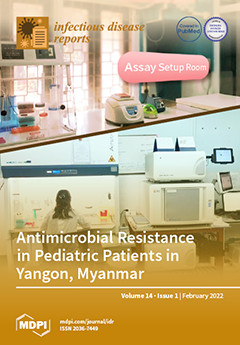Staphylococcus pettenkoferi is a coagulase-negative staphylococcus, first described in 2002. Using medical databases, i.e., Scopus, Web of Science, Pubmed, and Embase, we identified and analysed research, reports, and opinions dealing with
S. pettenkoferi. Published data allow us to conclude that
S. pettenkoferi
[...] Read more.
Staphylococcus pettenkoferi is a coagulase-negative staphylococcus, first described in 2002. Using medical databases, i.e., Scopus, Web of Science, Pubmed, and Embase, we identified and analysed research, reports, and opinions dealing with
S. pettenkoferi. Published data allow us to conclude that
S. pettenkoferi is a human commensal, opportunistic bacterium and may be isolated from the environment and animals. The involvement of
S. pettenkoferi in bloodstream infection and osteomyelitis has been described, but its clinical relevance is not fully understood, so far. This work summarizes knowledge about
S. pettenkoferi and reveals the difficulties and rules for interpreting the results of microbiological tests, when
S. pettenkoferi has been identified in the blood sample. Clinical and laboratory criteria, recommended by Centers for Disease Control and Prevention (CDC) and the third international consensus definitions of sepsis and septic shock (Sepsis-3), are important to determine whether the presence of bacteria in the sample is a consequence of an infection, contamination from the environment, or translocation of the bacteria outside the place of its natural existence. The precise identification of bacteria from the blood sample and recognizing the true bacteraemia are critical to implement the appropriate procedures and make decisions concerning the patient’s medical care.
Full article






